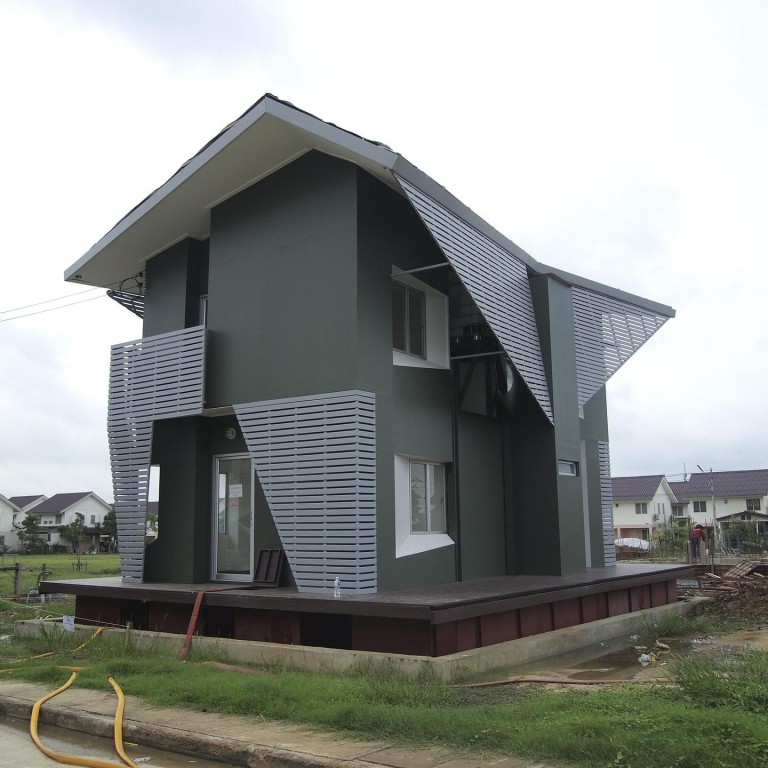
Floating homes may be answer to flooding in Thailand
Nestled among hundreds of identical white and brown two-storey homes crammed in this neighbourhood for factory workers is a house with a trick - one not immediately apparent.
Hidden under the house and its wrap-around porch are steel pontoons filled with styrofoam. These can lift the structure three metres off the ground if Ban Seng village, two hours north of Bangkok, floods as it did in 2011 when two-thirds of the country was inundated, affecting a fifth of its 67 million people.
The 2.8 million baht (HK$667,145) amphibious house is one way architects, developers and governments around the world are brainstorming solutions as climate change brews storms, floods and rising sea levels that threaten communities in low-lying coastal cities.
"We can try to build walls to keep the water out, but that might not be a sustainable permanent solution," says architect Chuta Sinthuphan of Site-Specific, the firm that designed and built the house for Thailand's National Housing Authority (NHA).
"It's better not to fight nature, but to work with nature, and amphibious architecture is one answer, says Chuta, who is organising the first international conference on amphibious architecture in the Thai capital in late August.
In Thailand, as across the region, more and more construction projects are returning to using traditional structures to deal with floods, such as stilts and buildings on barges or rafts. The amphibious house, built over a man-made hole that can be flooded, was completed and tested in September 2013. The home rose 85cm as the dugout space under the house was filled with water.
In August, construction is set to begin on another flood-resistant project - a three million baht floating one-storey house on a lake near Bangkok's main international airport.
"Maybe in the future there might be even more flooding … and we would need to have permanent housing like this," says Thepa Chansiri, director of the NHA's department of research and development.
The 1,000 square foot floating house will be anchored to the lake's shore, complete with electricity and flexible-pipe plumbing.
Like the amphibious house, the floating house is an experiment for the NHA to understand what construction materials work best and how fast such housing could be built in the event of floods.
The projects in Thailand are a throwback to an era when Bangkok was known as the Venice of the East, with canals that crisscrossed the city serving as key transport routes.
"One of the best projects I've seen to cope with climate-related disasters is Bangkok in 1850. The city was 90 per cent on water - living on barges on water," says Koen Olthuis, founder of Dutch architecture and urban planning firm Waterstudio.
"There was no flood risk, there was no damage. The water came, the houses moved up and down."
Olthuis started Waterstudio in 2003 because he was frustrated that the Dutch were building on land in a flood-prone country surrounded by water, while people who lived in houseboats on the water in Amsterdam "never had to worry about flooding".
His firm now trains people from around the world in techniques they can adapt for their countries. It balances high-end projects in Dubai and the Maldives with work in slums in countries such as Bangladesh, Uganda and Indonesia.
One common solution for vulnerable communities has been to relocate them to higher ground outside urban areas - but many people work in the city and do not want to move. Olthuis says the solution is to expand cities onto the water.
Waterstudio has designed a shipping container that floats on a simple frame containing 15,000 plastic bottles. Waterstudio's aim is to test these containers in Bangladesh slums, giving communities flood-safe floating public structures.

